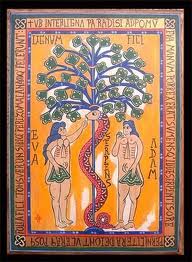The peoples that could enjoy the fig trees, used to venerate them because of their delicious fruits and their proven therapeutic properties. The fig is an extraordinary fruit that has been part of the habitual diet of different cultures from very remote times.

It has been proven that the fig trees were one of the first plants cultivated by humans. Fossilized figs from 9000 B.C. were found in the Neolithic town Gilgal I, in the Jordan Valley.
This is because in most of the fig trees, the fruits are obtained without pollination by sporadic development of the ovule, so they are one of the species of easy domestication. This finding indicates that their domestication is prior to wheat, barley and legumes, so it may be the first known case of agriculture.

The Egyptians, 4,500 years ago, continued collecting it, leaving proof of it in the hieroglyphics of this ancient civilization found in their funerary monuments, specifically in the pyramids of Gizeh (year 4000-5000 BC) where drawings representing the collection of figs were found.

They were also an essential food for the Greeks: the fig trees were consecrated to Dionysus, the god of renewal. When a city was founded, they planted a fig tree in the agora (public square) to mark the place where the elders would gather. It was the favorite ambrosia of Plato, in fact the fig is known as the "fruit of the philosophers".

In the Old Testament, we can read its name as a reference to one of the trees of the abundance of the Promised Land. It is also told in this book that, when Adam and Eve were expelled from Paradise, they used a fig-tree leaf to cover themselves.

In ancient Rome, they considered it a sacred tree, since the founders of Rome, Romulus and Remus, were suckled by the Capitoline Wolf under a fig tree. The Romans used it in religious ceremonies offering it to the god Bacchus (god of wine). In the festivities of the new year, the inhabitants of Rome exchanged the figs as a gift. In the present time, it has remained one of the fruit trees most appreciated, and the great health benefits of figs have already been scientifically proven.






